The Impact of Computer Vision in Healthcare Innovation
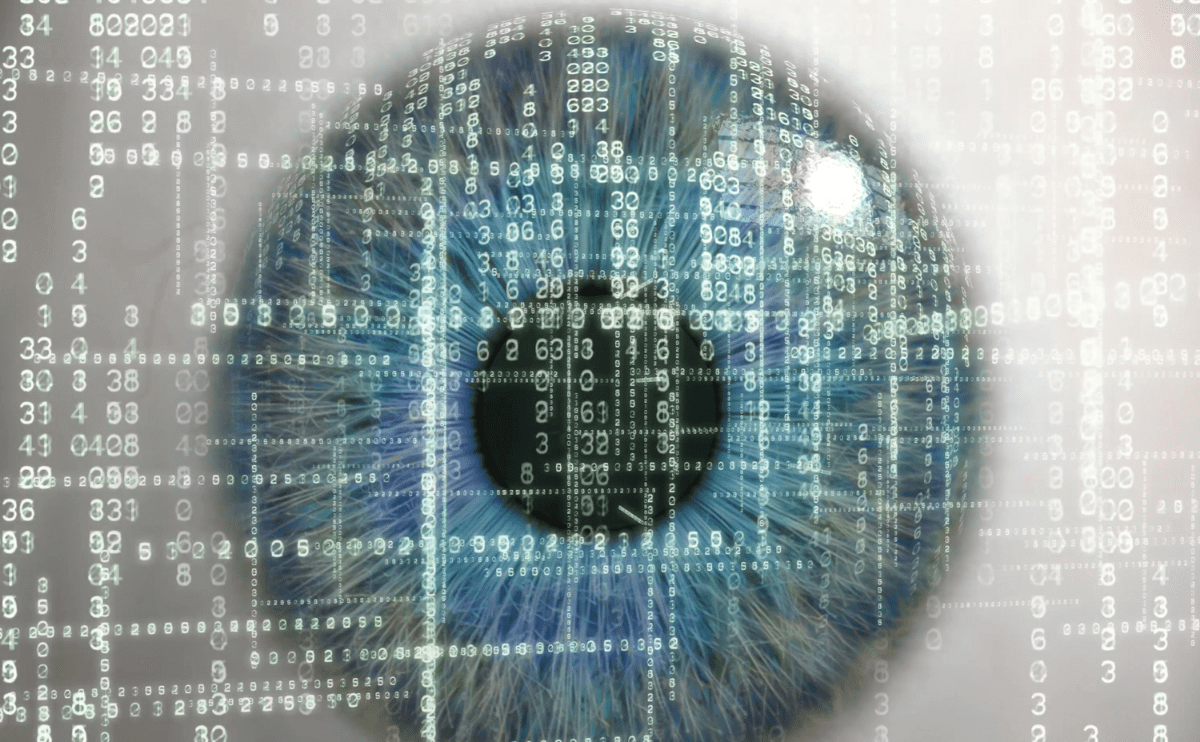
Think about the challenges faced by hospital managers, especially when it comes to improving diagnostic accuracy. Traditional methods are tried and true, but they rely on the human eye and judgment, which aren’t foolproof. Mistakes happen, and patient care suffers. Now, imagine a tool that offers a new perspective — computer vision in healthcare. It equips doctors with the ability to see what’s hidden in plain sight. It’s there in the operating room, guiding surgeons; in the radiology department, assisting with precise diagnostics; and even in the lab, fastly sifting through data.
Curious about this AI development service for the medical field and how to make it work for you? We’ll walk you through how computer vision is turning healthcare into a high-tech playground, spotlight its benefits, and flag the potential pitfalls – because, let’s be honest, the smartest tech can be tricky in implementation.
What is Computer Vision?
Computer vision is a remarkable branch of artificial intelligence that enables computers to collect and analyze information from digital images, videos, and other visual sources.
In 2023, the computer vision in healthcare market size soared to an impressive $1.5 billion, rising from just over $1 billion in 2022. With a remarkable compound annual growth rate (CAGR) of 47.6%, these computer vision in healthcare market trends suggest explosive growth in the coming decade. Europe currently leads as the largest market, while North America is rapidly catching up as the fastest-growing region.
Such an explosive growth of computer vision is fueled by the vast amount of data we produce. Every day, over 3 billion images get shared online, and this ocean of visual data helps computer vision systems sharpen their skills and improve their accuracy. As computing power has increased and new hardware and algorithms have emerged, accuracy rates for object identification have skyrocketed. In less than a decade, systems have improved from 50% accuracy to an astonishing 99%, often reacting to visual inputs faster than humans.
How is Computer Vision Used in Healthcare?
Computer vision in healthcare industry is used for tasks like medical image analysis, detecting anomalies in X-rays or MRIs, monitoring patient movement in hospitals, and even in surgeries for precision and accuracy. It enables faster diagnosis, personalized treatment plans, and overall improved patient care.
Basic Principles of How Computer Vision Works
Let’s break down the basic principles of how computer vision works, step by step, to understand its complexity and potential.
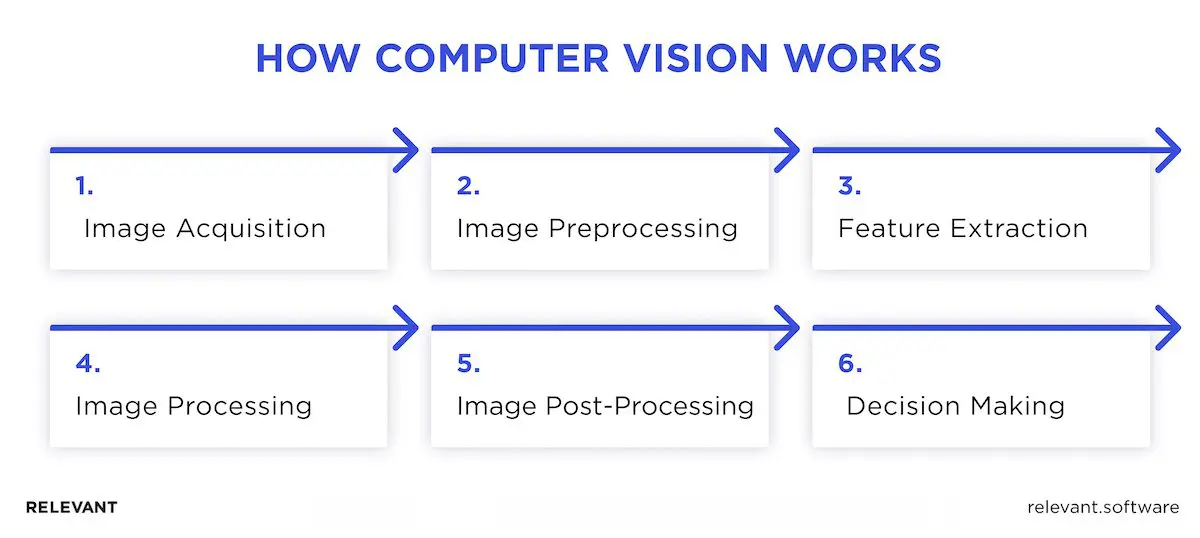
1. Image Acquisition
Everything begins with image acquisition, where visual data is collected from numerous sources. Cameras in hospitals and clinics, drones capturing birds-eye views, and satellites in orbit all contribute to this process. The aim is to collect a large volume of high-quality images, which will serve as the raw material for further analysis.
2. Image Preprocessing
After being captured, images are subjected to preprocessing to enhance their quality. This step involves several techniques:
- Noise Reduction: Filters out any unwanted noise or distortions in the image.
- Normalization: Adjusts the image to ensure that its intensity values fall within a targeted range, which simplifies image analysis.
- Enhancement: Enhances the image’s sharpness and clarity to accentuate key details.
3. Feature Extraction
Feature extraction is the process of identifying key characteristics within the segmented images. It’s like highlighting the most important bits of a document. This involves:
- Texture Analysis: Evaluates the texture of regions within the image, akin to determining the uniformity or variability in patterned data.
- Morphological Operations: Analyze shapes and structures to differentiate between benign and malignant formations.
- Statistical Measures: Calculates values such as mean and variance to provide additional context.
4. Image Processing
With the features identified, the system moves to image processing, where it manipulates the image data to extract specific information. This can involve:
- Object Detection: Identifies and locates objects within the image.
- Image Segmentation: Divides the image into different regions or segments to isolate areas of interest.
- Image Recognition: Matches the extracted features to known patterns or objects.
5. Image Post-Processing
Post-processing involves the final adjustments to ensure images are ready for use.
- 3D Reconstruction: Visualizes structures in three dimensions, especially useful for surgical planning.
- Image Enhancement: Further improves image clarity or highlights specific features, which ensures nothing important gets overlooked.
6. Decision Making
The final step is decision-making, where the system uses the extracted information to perform actions or make decisions. This can include:
- Classifying Objects: Identifies and categorizes objects in the image through image classification techniques.
- Tracking Movement: Tracks and analyzes the movement of objects over time.
- Controlling Robots: Directs robotic systems via visual data to enhance task precision.
Key Technologies Involved in Computer Vision
Computer vision harnesses several advanced technologies to interpret and act on visual data. These technologies work together to enable machines to see, understand, and respond to the visual world. While there are many technologies involved, we’ll highlight only the most crucial ones.
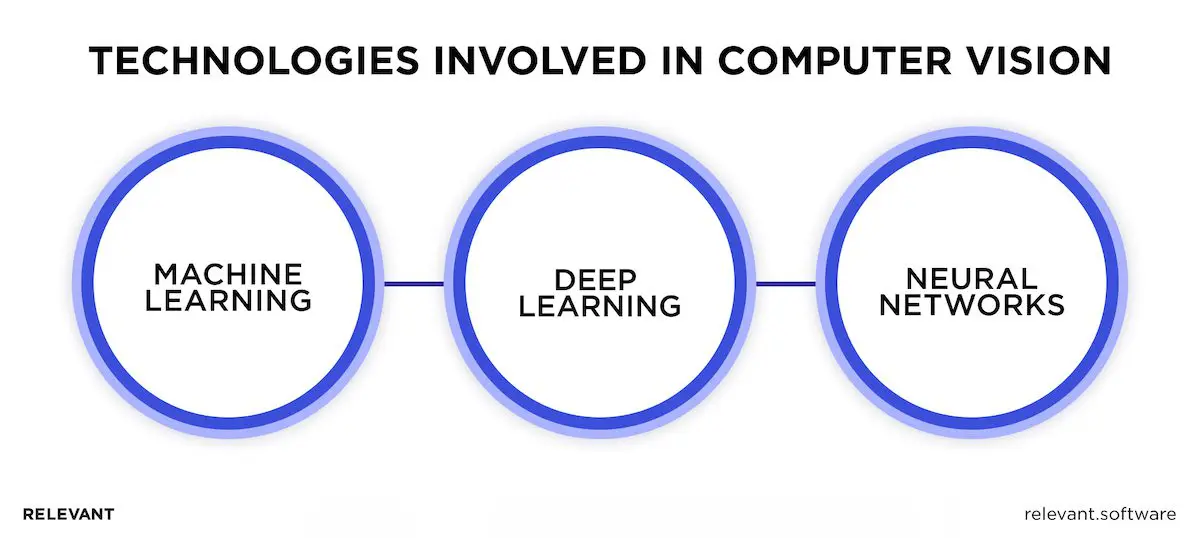
Machine Learning
Computer vision relies heavily on machine learning in healthcare industry, where computers use algorithms to self-learn from data instead of being manually programmed. In the learning process, the system receives a vast amount of visual data to identify patterns and regularities to help the system recognize objects, scenes, and various other elements within images. In medical imaging, for instance, a computer vision system can differentiate between types of tumors, which improves diagnostic precision in medicine.
Deep Learning
This subset uses artificial neural networks to dive deep into complex data patterns. These neural networks, composed of multiple layers, allow the system to process images at various levels of abstraction. For example, in medical diagnostics, deep learning models such as convolutional neural networks can analyze thousands of X-ray images to identify minute differences that might indicate the presence of a disease, which a human eye could easily miss.
Neural Networks
Neural networks mimic the brain’s structure, featuring a series of interconnected nodes, or neurons, that work together to interpret data. Each neuron processes a small part of the data and transfers it to the next layer, collectively assembling a comprehensive view of the image. This layered approach allows neural networks to learn from data efficiently, which improves their ability to recognize and classify objects.
Applications of Computer Vision in Healthcare
The application of computer vision in healthcare is as diverse as impressive. Here are some key examples of computer vision in healthcare, proving that even machines are getting their hands dirty in the healthcare industry—figuratively speaking, of course!
Medical Imaging
Modern diagnostics rely heavily on medical imaging to reveal crucial details about the body’s inner workings. With the integration of computer vision, the advancements we’re seeing in this field are truly exceptional.
- Enhancements in MRI, CT Scans, and X-rays: Computer vision enhances image quality, sharpens edges, and filters out noise, which gives doctors a clearer view of what’s happening inside the body. For instance, when evaluating an MRI for potential brain anomalies, the application of computer vision algorithms can precisely delineate the boundaries of tumors, which helps to determine their size and growth rate.
- Early Disease Detection and Diagnosis: The earlier you catch a disease, the better the chances of treating it successfully. Computer vision shines in this area, especially in detecting diseases before they fully develop. For example, computer vision systems analyze mammograms with incredible precision, picking up on the tiniest changes that could signal cancer, often before any symptoms appear.
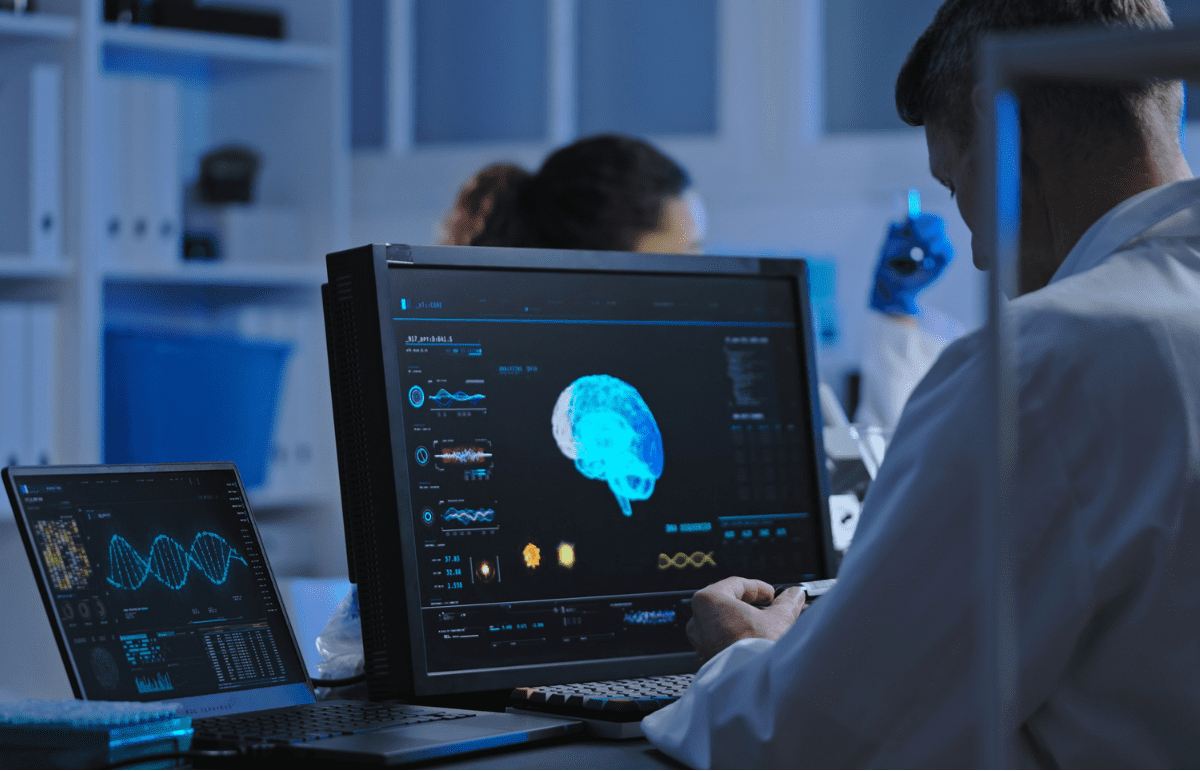
Case Studies: Successful Implementations in Medical Imaging
Stanford University, for instance, developed a computer vision tool that reads chest X-rays to diagnose pneumonia. Similarly, at the Radboud University Medical Center in the Netherlands, computer vision helps identify skin cancer from images, which increases diagnostic accuracy and speed.
Patient Monitoring
With computer vision applications in healthcare, patient monitoring has taken a leap forward, making healthcare more proactive and responsive. It helps to provide:
- Remote monitoring of patients. Computer vision enables remote health monitoring of patients, which allows healthcare providers to track and detect potential issues without the need for constant physical presence. For instance, in elder care facilities, the use of computer vision can track falls or irregular movements and alert staff immediately, providing peace of mind for both families and caregivers.
- Analysis of Patient Movements and Vital Signs. Computer vision doesn’t just watch; it understands. By analyzing how patients move and their vital signs, it can identify when something’s not quite right. This detailed analysis helps doctors intervene before minor issues become major problems. For example, in stroke recovery, computer vision systems analyze gait patterns and arm movements, providing therapists with precise data to tailor rehabilitation exercises to each patient’s needs.
Case Studies: Improved Patient Outcomes Through Continuous Monitoring
At Mount Sinai Hospital, computer vision technology monitors patients’ vital signs and alerts healthcare providers to any significant changes, which enables timely interventions and improves patient care. In other computer vision use cases in healthcare, at a senior care facility in Japan, technology assists in monitoring residents’ movements to prevent falls and ensure safety.
Surgery Assistance
The operating room has entered a new era, where advanced technologies like computer vision provide surgeons with medical applications that transform surgical procedures.
- Real-time Guidance for Surgeons. During surgery, computer vision systems provide real-time guidance by overlaying vital information directly onto the surgeon’s view, much like a GPS for the body. For example, in complex brain surgeries, this technology can map out a patient’s brain in incredible detail, guiding surgeons to avoid critical areas and reduce the risk of complications.
- Robotic Surgery Advancements. Robots, once a fixture of science fiction, now equipped with surgical skills to assist with precision that was once unimaginable. Computer vision enhances these robotic systems, which allows them to perform intricate tasks with minimal invasiveness.
Case Studies: Examples of Computer Vision-Assisted Surgeries
A prime example of computer vision in healthcare applications is the da Vinci Surgical System, which provides surgeons with a detailed, 3D view of the surgery site, making precise maneuvers possible.
Pathology
With the integration of computer vision, the field of pathology is experiencing a transformative shift.
- Automated Analysis of Pathology Slides. Pathology involves scrutinizing tissue samples for signs of disease—a task that demands precision and patience. Computer vision automates this process, scanning slides for patterns that indicate diseases like cancer, often with more accuracy than a human could achieve alone.
- Improved Accuracy in Detecting Diseases Like Cancer. By analyzing cell patterns and structures in pathology slides, сomputer vision can identify malignancies that might be overlooked by manual examination. This leads to earlier and more accurate diagnoses.
Case Studies: Successful Use Cases in Pathology
At Memorial Sloan Kettering Cancer Center, computer vision technology is employed to analyze pathology slides for breast cancer diagnosis, achieving higher accuracy than traditional methods.
Drug Development
Developing new drugs involves a long and costly journey from lab to market. Computer vision:
- Accelerate the Drug Discovery Process. By analyzing vast datasets of chemical compounds, computer vision helps researchers pinpoint promising candidates faster than traditional methods. For example, computer vision can rapidly screen thousands of compounds and identify those with the best potential for therapeutic success.
- Predict Drug Interactions and Outcomes. Computer vision doesn’t stop at discovery; it helps predict how drugs will behave in the human body. By analyzing complex biological data, it can foresee potential side effects and efficacy, which helps researchers to optimize drug formulations.
Case Studies: Impact on the Pharmaceutical Industry
Pharma leaders like GlaxoSmithKline harness computer vision to revolutionize drug discovery, which drastically cuts down the time and resources needed to pinpoint new drug candidates. Novartis is also on board with this technology, employing computer vision to assess new drug effectiveness, simplify development processes, and expedite clinical trials.
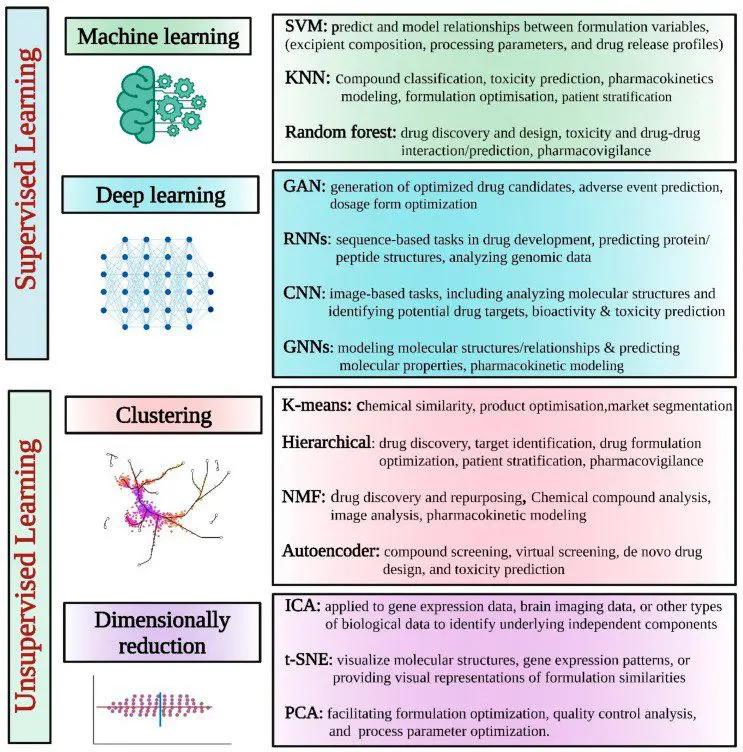
Source: ncbi.nlm.nih
Benefits of Computer Vision in Healthcare
From spotting the earliest signs of disease to customizing treatments for each individual, computer vision is multifaceted. Here are the main benefits of AI in healthcare which impact the industry.
Improved Diagnostic Accuracy
With the best computer vision in healthcare, medical professionals can now detect diseases earlier and more accurately, which leads to faster, more effective treatments. This early detection not only improves treatment outcomes and minimizes misdiagnoses but also reduces the costs of more advanced treatments down the line.
Expected ROI: Accurate and early diagnoses significantly reduce the financial burden on healthcare systems. Without misdiagnoses, there are fewer unnecessary treatments and malpractice claims.
Enhanced Operational Efficiency in Healthcare Facilities
Computer vision in healthcare isn’t just for diagnosing patients; it also ensures workplace safety. For example, computer vision can alert staff when equipment is not properly stored or sanitized, prompting immediate action.
Expected ROI: Fewer hospital-acquired infections mean shorter hospital stays and lower associated costs. Plus, a safe workplace leads to reduced insurance premiums and fewer potential litigation costs.
Reduction in Healthcare Costs Through Automation
Computer vision excels at automating routine tasks in healthcare, taking care of tedious duties like counting cells, measuring tumors, and cataloging images.
Expected ROI: Automation means fewer hours and costs for personnel, and fewer mistakes mean less repetition of tests or procedures. It’s like having a digital assistant who works nonstop and never needs a break.
Improved Treatment Plans and Recovery Times
Computer vision doesn’t just stop at diagnosis; it plays a crucial role in treatment planning. Through the analysis of imaging data, doctors can tailor treatment plans to fit the individual needs of patients, which enhances recovery times and outcomes.
Expected ROI: Personalized treatment plans mean patients recover faster and more effectively, reducing overall healthcare costs. It’s like giving each patient a custom-tailored suit but for their medical needs.
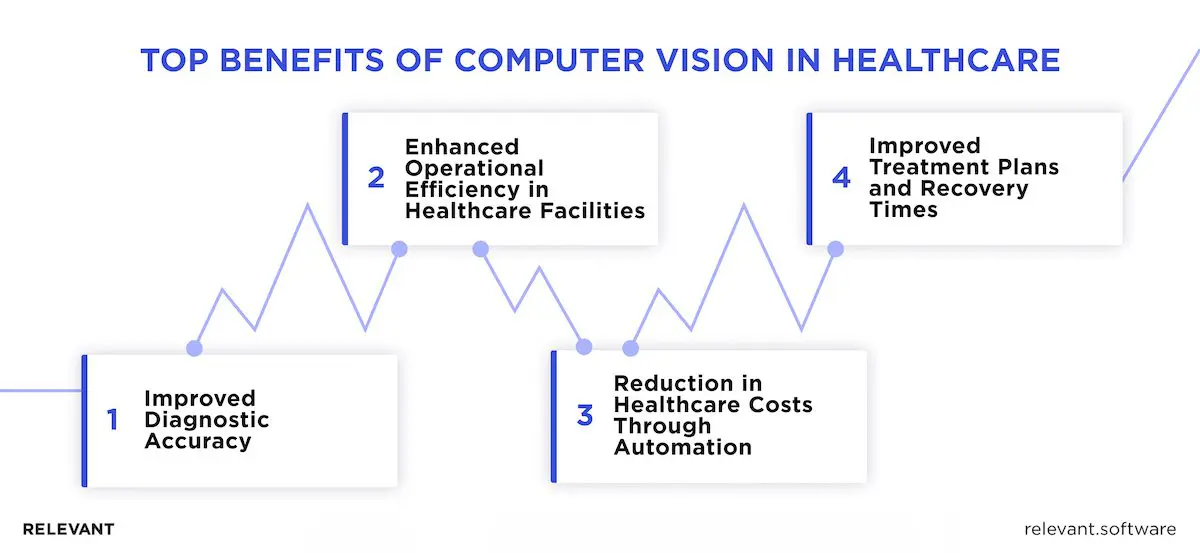
Challenges of Computer Vision in Healthcare
The implementation of computer vision in healthcare faces distinct challenges, which are commonly resolved by a professional AI software development company.
A major challenge for computer vision in healthcare is the quality and accessibility of data. There’s often a shortage of high-quality, labeled medical images needed to train algorithms effectively. Plus, the variation in how images are captured—due to differences in equipment, techniques, and patient populations—adds complexity to the process.
Integrating computer vision into existing healthcare systems is another tricky area. It’s like fitting a new puzzle piece into an old jigsaw—making sure these systems mesh well with legacy IT infrastructure can be a real headache. New technologies can disrupt well-established workflows, which leads to resistance from staff accustomed to the old ways. Not to mention, this integration process can be both expensive and time-consuming.
Then, there are the ever-present privacy and data security concerns. Protecting sensitive patient information is paramount, as is shielding systems from cyberattacks and data breaches. Compliance with regulations like HIPAA is non-negotiable, which adds another layer of complexity to the equation.
Regulatory compliance is a big deal, too. Getting necessary approvals from bodies like the FDA for medical devices that use computer vision can be a lengthy process. There’s a big question of liability—who’s answerable when mishaps occur? And what about ethical concerns like algorithmic bias and fairness? These are questions that need answering.
The healthcare industry has a reputation for being slow to embrace change. Getting healthcare professionals on board with new technologies can be challenging. Building trust in AI systems is crucial, as is addressing concerns about potential job displacement.
Effective use of computer vision in healthcare hinges on properly trained professionals. They must learn how to effectively use and interpret the outputs of computer vision systems in their daily work. Ongoing support through training and adaptation to new workflows via effective change management is vital to leverage the full potential of computer vision in healthcare.
Power of Computer Vision in Healthcare: Final words
Out of all the modern medical technologies, computer vision has the most potential to reduce human errors and deliver timely, accurate diagnoses. But what if your organization lacks the expertise to implement computer vision projects in healthcare effectively?
Not a problem! Leave the heavy lifting in healthcare software development to our expert team of data scientists, machine learning engineers, and software developers. We’re proud to be recognized on Clutch as a top computer vision company for our exceptional work and top-tier solutions.

Whether it’s coding, deployment, or integration, our dedicated AI engineers make computer vision so seamless that you’ll wonder how you’ve ever lived without it. Contact us!



